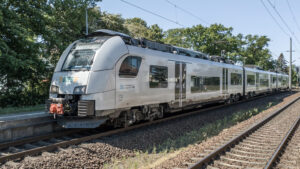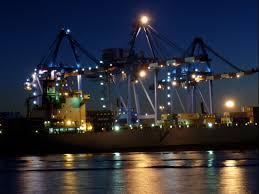Softlink Global’s Kunal Maheshwari and UltraTech’s Sandip Chowdhury decode what it truly takes to power seamless multimodal logistics, from digital rails to human intuition.

In today’s fast-evolving ecosystem, multimodal logistics redefines efficiency, sustainability, reach
When India speaks of transforming into a logistics powerhouse, it’s not just about laying new tracks or widening highways. It’s about something deeper, making all parts of the system talk to each other. And as Kunal Maheshwari, Chief Growth Officer at Softlink Global, puts it, “India’s journey toward logistics unity hinges on one fundamental enabler: data interoperability.”
In today’s freight landscape, a single cargo can pass through road, rail, and sea before reaching its destination. Without seamless data exchange between modes and systems, this journey can easily fall apart. “Whether the cargo moves from a hinterland warehouse to an international port or switches between road and rail, interoperable systems reduce friction, cut delays, and empower real-time visibility,” Kunal explains.
And while technology builds the backbone, policies like Gati Shakti and ULIP are the wiring. “They’re laying the digital rails for India’s physical logistics networks,” he says. These initiatives encourage data sharing across departments and transport modes, ensuring solutions aren’t just digital islands but part of a connected system. For tech players like Softlink Global, this policy-platform synergy is vital. “It allows us to build solutions that unify multimodal operations, not just digitise them in silos,” Kunal adds.
Still, no amount of tech can replace the role of the human frontline. “The people on the ground, logistics professionals, truckers, and yard planners, remain quietly indispensable,” Kunal reminds us. Their ability to resolve cross-modal hiccups, handle exceptions, and interpret compliance intricacies is what keeps the system truly moving. “India’s logistics unity will only work when people, platforms, and policies all move in sync.”

India’s journey toward logistics unity hinges on one fundamental enabler: data interoperability
That sync is already in action at UltraTech Cement, where Sandip Chowdhury, Head of Supply Chain, shares a real-world success story. “From our Birla White plant, we moved cargo to Kerala depots using road, rail, and sea, without missing a beat,” Sandip says.
The route began by truck to a nearby rail siding, followed by a CONCOR rake to Kandla Port. From there, coastal shipping carried it to Cochin, with final delivery via road. “It cut costs and transit time and even reduced our carbon footprint,” he notes.
What powered this journey was a mix of smart tech platforms, SAP-IBP for demand-supply visibility, FOIS for rail tracking, and real-time updates from coastal shipping and CONCOR. Still, tech had its limits. “SIM-based road tracking had patchy accuracy, and digital maturity varied across modes,” Sandip shares.
The real success? A well-coordinated team stepping in where systems fell short. And that’s the heart of India’s logistics future: where tech, policy, and human wisdom travel the same route, together.











